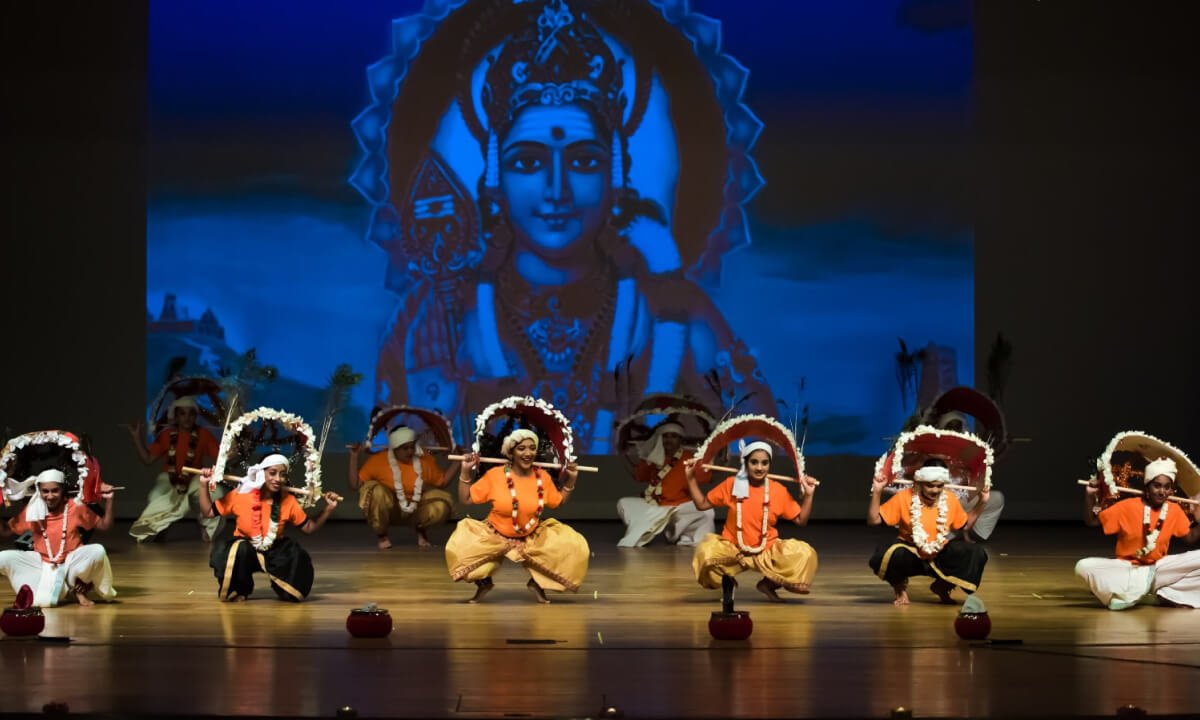folk dance
A ceremonial dance from Tamil Nadu, honoring Lord Murugan through the carrying of ornate bamboo poles filled with flowers.

Kavadi Attam, a ritual dance deeply rooted in Tamil Nadu’s cultural and spiritual heritage, originated in the small town of Palani. The dance is linked to the mythological tale of the giant Idumban, who is believed to have carried the Palani hills across his shoulders in the form of a Kavadi, symbolizing a great act of devotion and sacrifice.
Translated as the “Carrying of the Burden” dance, Kavadi Attam is a ceremonial offering performed by devotees of the Hindu deity Murugan, also known as Kartikeyan, the son of Lord Shiva and Goddess Parvati. Each participant carries an ornate kavadi—a long bamboo pole with two pails or baskets suspended at each end, often adorned with flowers and other sacred items. This act of bearing the Kavadi represents the devotees’ willingness to endure hardship in exchange for divine blessings.
Kavadi used as a prop on stage.
The structured movements of Kavadi Attam are performed during the festival of Thaipusam and often take place in temples, where devotees enter a trance-like state. Unlike other dance forms, the movements in Kavadi Attam are spontaneous and unchoreographed, embodying a sense of suspended animation and devotion. Devotees’ movements often imitate the peacock, which is believed to be Lord Muruga’s sacred vehicle, creating a visually symbolic connection to the deity. The dance incorporates balancing and controlling the Kavadi, with intricate steps and formations inspired by other folk forms such as Kodavattam and Mayil Attam.
Kavadi Attam features six main types performed during Thaipusam, each with unique elements and symbolic meanings: Paal Kavadi, Thol Kavadi, Alavu Kavadi, Koodam Mulle, Vette Mulle, and Mayil Kavadi. The variety in these forms adds depth to the ritual and allows devotees to express their reverence in different ways.
Kavadi dance is centered around the worship of Lord Muruga.
The attire worn during Kavadi Attam is vibrant and traditional. Women dress in bright yellow, saffron, or red saris, symbolizing purity and devotion, while men wear a saffron-colored dhoti, often bare-chested, and adorned with garlands around their necks. Both men and women smear sacred ash on their bodies as a mark of purity and spiritual dedication.
Carrying the Kavadi is considered an endurance test, embodying the devotees’ devotion and commitment to Lord Murugan. The physical challenge of bearing the Kavadi, combined with the rhythmic dance, is seen as a means of purification, allowing devotees to transcend physical limitations and connect spiritually with the divine.